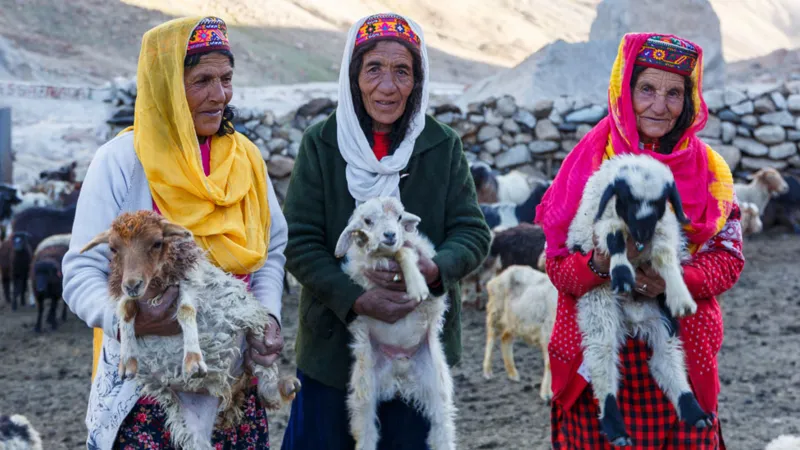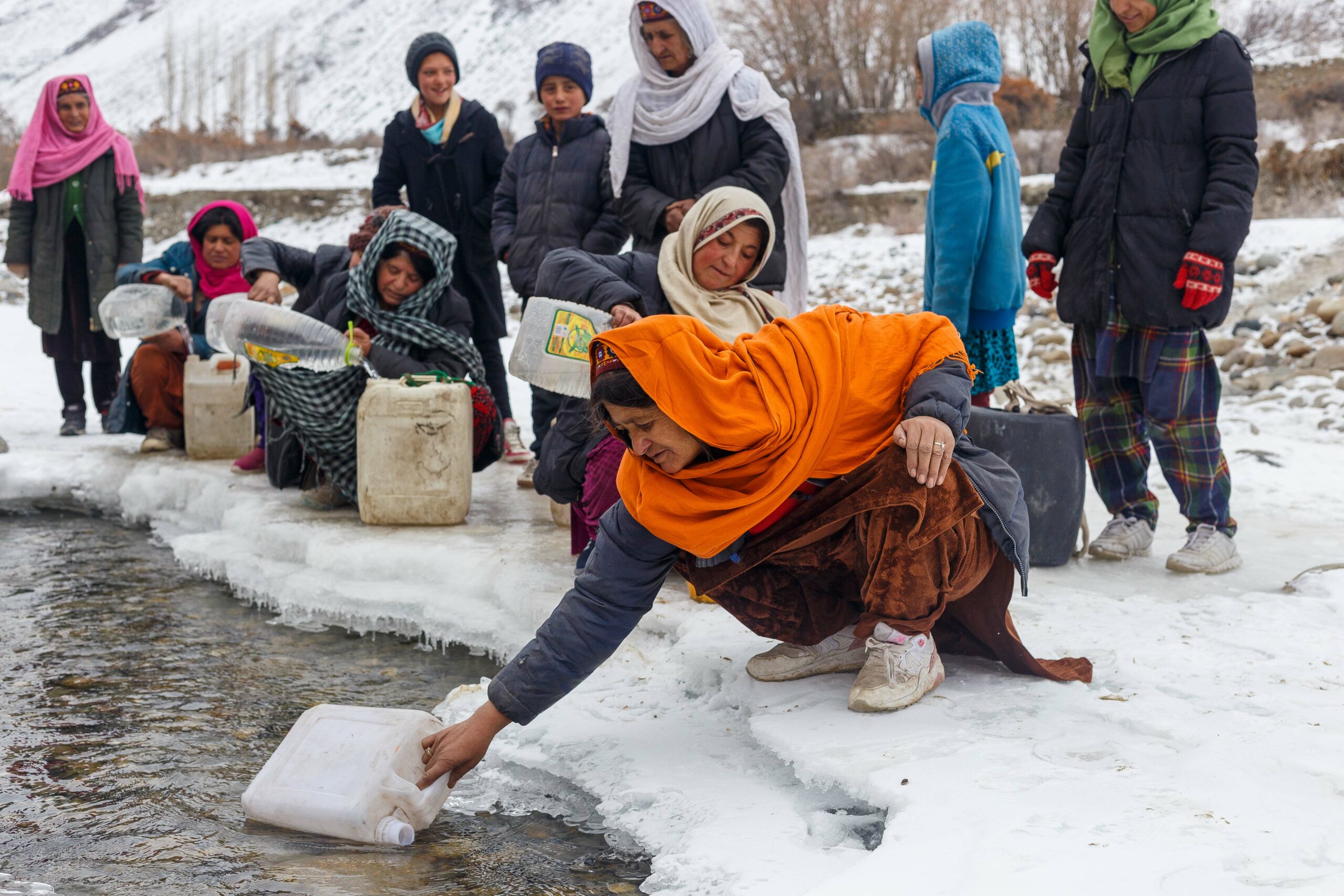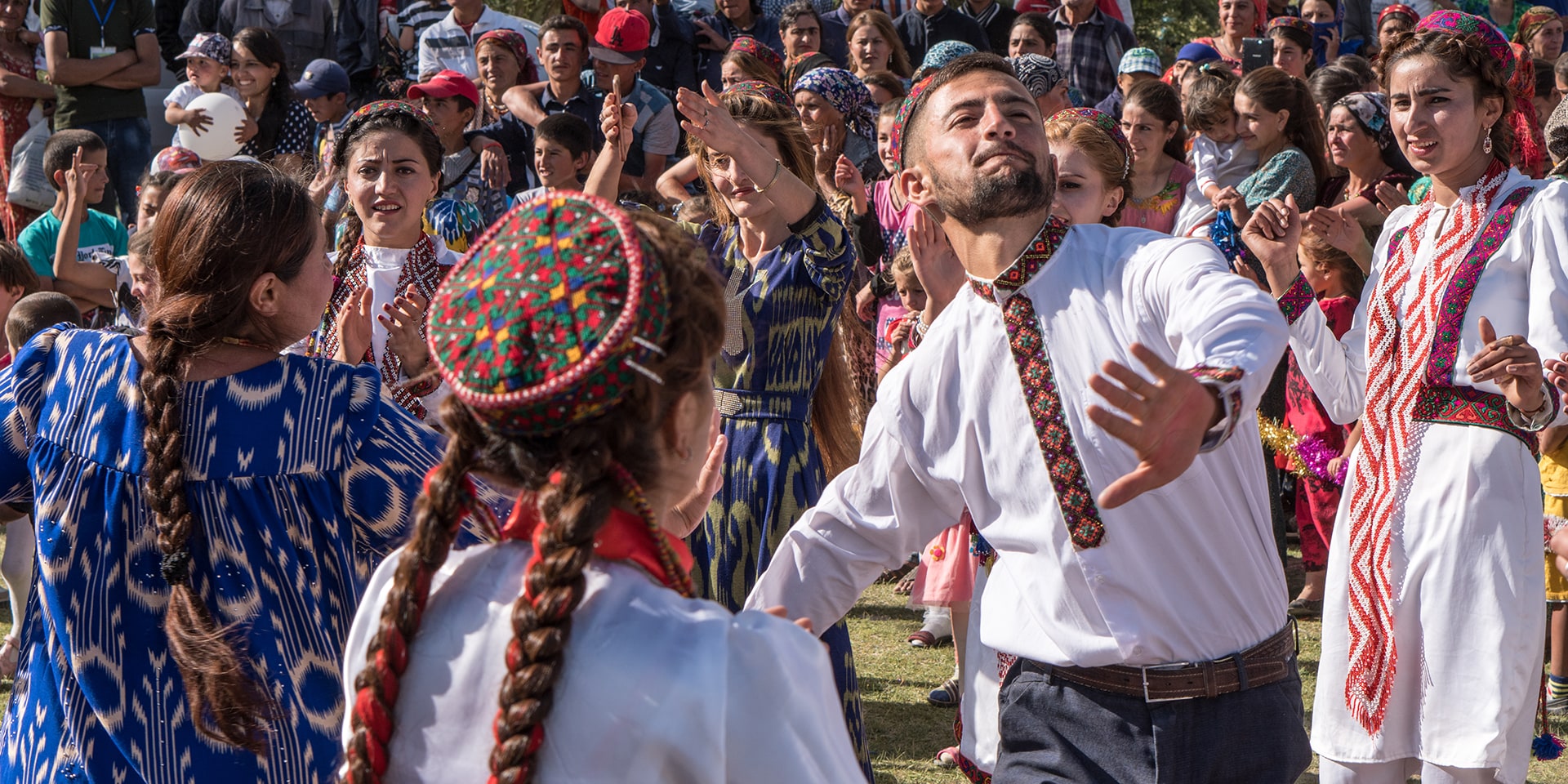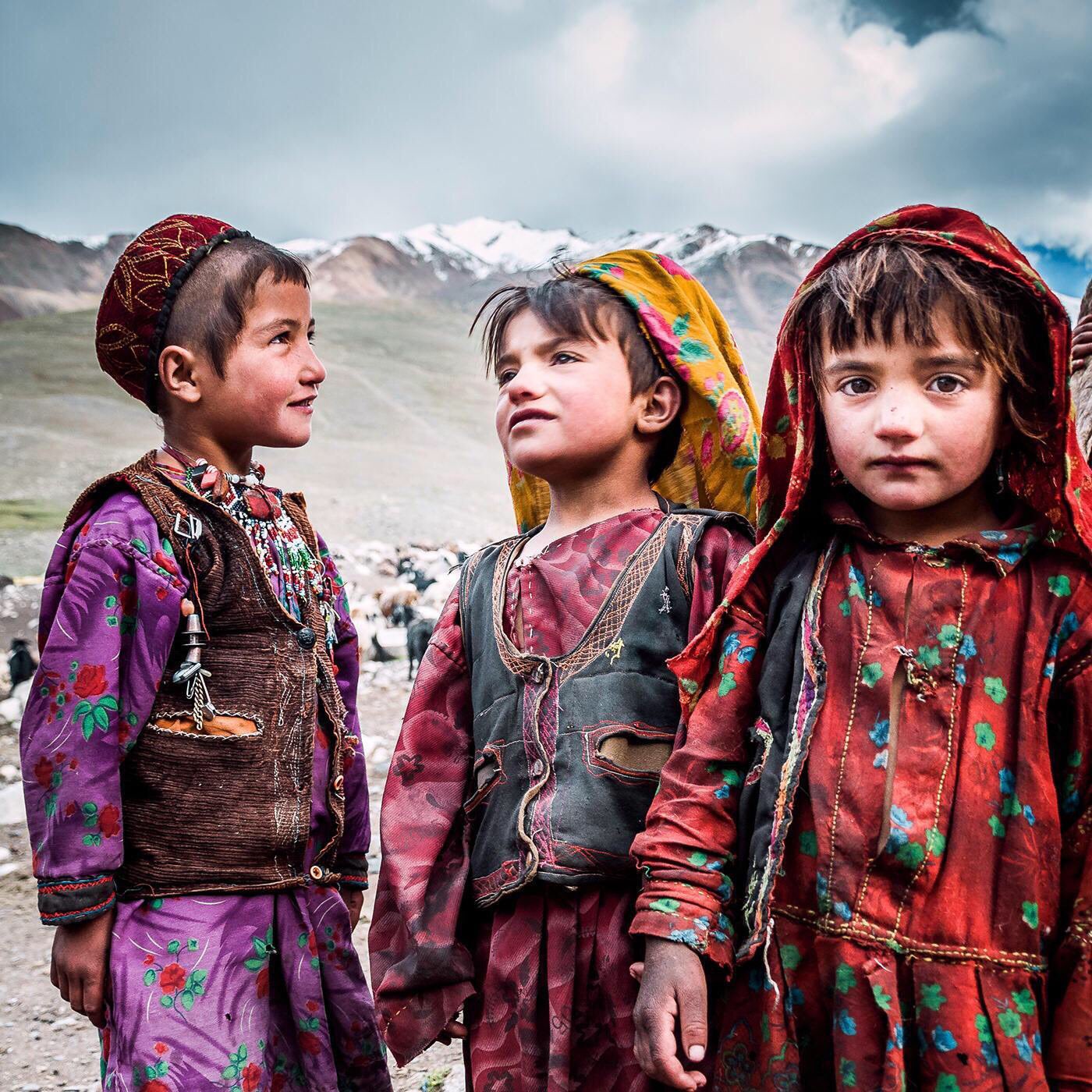Wakhi Language
The Wakhi people or the Khik ( Xik ) are an Iranian ethnic group living in adjacent, remote regions of Afghanistan, Tajikistan, Pakistan and China. They are predominantly centered in Afghanistan's Wakhan Corridor, the northern-most part of Pakistan's Gilgit-Baltistan, the Gorno-Badakhshan region of Tajikistan and the southwestern region of China's Xinjiang. They are native speakers of Wakhi, an Indo-European language of the Iranian branch.
Wakhi Peoples Are called :
The Wakhi people refer to themselves as Khik and to their language as Khik Xik. The exonym Wakhi, which is given to them by their neighbors, is based on Wux the local name of the region of Wakhan, deriving from Waxšu, the old name of the Oxus River (Amu Darya), which is a major river formed by the junction of the Vakhsh and Panj rivers on the border between Tajikistan and Afghanistan.
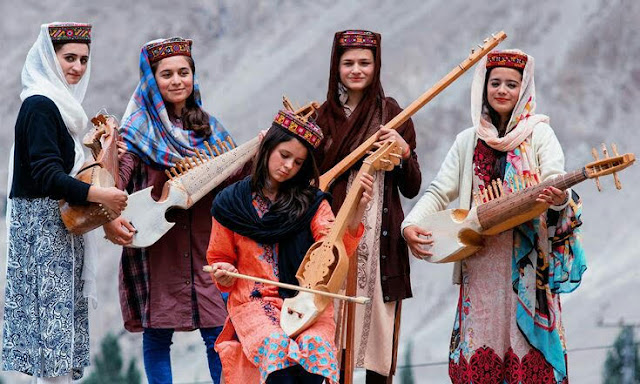 |
| Bulbulic Music School At Gulmit - Promoting Wakhi Music to modren world , Picture by S.M. Bukhan's |
Where wakhi Peoples existing ?
The Wakhi Living literally on the Roof of the World or the Bam-I-Duniya are the Wakhi-speakers have a total population of about 50,000–70000. The population, who predominantly live in the Wakhan Corridor, the narrow strip of Afghan territory today's Badakhshan region located in northeastern Afghanistan and southeastern Tajikistan.The population is divided between four countries: Afghanistan, Tajikistan, Pakistan and China's Xinjiang.
The Wakhi people have been settlers of their lands for hundreds if not thousands of years however, the machinations of The Great Game during the eighteenth and nineteenth century created boundaries which separated the large body of the Wakhis into living in four countries.
Wakhi In Tajikistan
Wakhi are inhabitants of Roshtqal'a District and Ishkoshim District of Gorno-Badakhshan Autonomous Region. Tajikistan Contain Appox 23,816 (2018) Population Of Wakhi people.
Wakhi In Afghanistan
Wakhi primarily live in the Wakhan region of Badakhshan Province. The Wakhan sits at the junction of three major mountain ranges, the Hindu Kush, the Himalaya/ Karakoram, and the Pamirs – what is called the Pamir Knot.



Wakhi people in Wakhan, Afghanistan
The valley is carved by the Wakhan River, fed by glacial meltwater from the surrounding mountains. From the town of Ishkashim, at 2,700 meters above sea level, the valley climbs steadily eastward, eventually reaching high altitude pasture land, above 4,000 meters, along the border with China. there are appox 17,485 (2018) Wakhi Peoples In Afghanistan.
Wakhi In Pakistan
In Gilgit-Baltistan in the north of Pakistan, Wakhi predominantly live in the upper region of Hunza popularly known as Gojal.
Wakhi speakers also live in Ishkoman Valley of District Ghizer, and some villages of Yasin Valley . Wakhi also live in Broghal in Chitral district of Khyber Pakhtunkhwa province.Wakhi population in pakistan Is Appox 22,974 (2018).
 |
| Wakhi Girl Shaila From Zood Khun Chipurson. By Ahmad Nafees Torwali - Own work, CC BY-SA 4.0, Link |
Wakhi In China
In Turkey There are some wakhi villages in Turkey in the eastern regions, where they have migrated from Afghanistan in 1979 during the Afghan and Russian war.
Nows a Day Many wakhi families are Migrating From Tajikistan to the parts Of Russia and maccoo.
Religion Of wakhi people
The Wakhi are mostly adhere to Shia Imami Ismaili Islam, which is regarded as their ethnic religion and are followers of the Aga Khan.
Economy
The Wakhi of Afghanistan Pamir are primarily nomadic, depending on their herds of yaks and horses.They often have two residences—one for winter and one for summer. Their houses are built of stone and sod.
 |
| Pakistan Trade between Wakhi people with Khisghiz Afghanistan through Irshad Pass , Picture Credit by Amunbai |
Cultural preservation
In Pakistan, the central organization of the Wakhi is the Wakhi Cultural Association Pakistan (WCA), an organization that is registered with the Government of Pakistan and which works with the collaboration of the Ministry of Culture and Tourism and Lok Virsa Pakistan. The Association is working for the preservation of the Wakhi language and culture, as well as documenting their poetry and music.
Radio Pakistan Gilgit relays the Wakhi radio programme "Sadoyah Boomy Dunyo", the voice of the roof of the world. The Wakhi Cultural Association has arranged more than twenty programmes since 1984, which includes cultural shows, musical nights, and large-scale musical festivals with the collaboration of Lok Virsa Pakistan, the Aga Khan Cultural Service Pakistan (AKCSP) and Pakistan television. In 2000, the WCA won a "Best Programme" organizer award in the Silk Road Festival from the President of Pakistan, Pervez Musharraf. A computerized codification of the Wakhi script has been released, which will help to promote the language development program and documentation of Wakhi poetry, literature, and history
Writing System
Wakhi was not a written language. Writing systems have been developed for the language using Arabic, Cyrillic and Latin scripts.
Wakhi Alphabets using Cyrillic
| Cyrillic | Wakhi Word | Alphabet Sound | Word Sound |
|---|---|---|---|
| a | aman | a | aman |
| b | beṭ | b | bet̃ |
| c | cum | c | cum |
| č | čoy | ch | choy |
| č̣ | č̣eẓ̌em | c̃h | c̃h |
| d | daf | d | daf |
| ḍ | ḍox | d̃ | d̃okh |
| δ | δai | dh | dhai |
| e | ehson | e | ehson |
| ә | — | ẽ | — |
| f | fuks | f | fuks |
| g | gut | g | gut |
| ɣ | ɣazg | gh | ghazg |
| ɣ̌ | ɣ̌ar | g̃h | g̃har |
| h | hel | h | hel |
| j | jon | j | jon |
| ǰ̣ | ǰ̣am | j̃ | j̃am |
| k | kak | k | kak |
| x | xun | kh | khun |
| x̌ | x̌ik | k̃h | k̃hik |
| l | istin | l | istin |
| m | mum | m | mum |
| n | nan | n | nan |
| o | oston | o | oston |
| p | pup | p | pup |
| q | qaq | q | qaq |
| r | ruxn | r | rukhn |
| s | suy | s | suy |
| š | šač | sh | shach |
| ṣ̌ | ṣ̌apt | s̃h | s̃hapt |
| t | tat | t | tat |
| ṭ | ṭor | t̃ | t̃or |
| ϑ | ϑoṭ | th | thot̃ |
| u | ustoδ | u | ustodh |
| ʉ | ʉṣ̌ʉr | ũ | ũs̃htũr |
| v | voyn | v | voy |
| w | wurk | w | wurk |
| y | yark | y | yark |
| z | za | z | za |
| ʒ | ʒaqlai | z̃ | z̃aqlai |
| ž | žui | zh | zhui |
| ẓ̌ | ẓ̌arẓ̌ | z̃h | z̃harz̃h |
Map
Ishkoshim
Wakhan Corridor Afghanistan
Gojal Valley, Hunza Pakistan
Kashghar, shangyang Province China
Ishkoman Valley, Ghizer Pakistan
Chipurson Valley, Gojal Hunza Pakistan
Reference about wakhi Population wakhi.org

